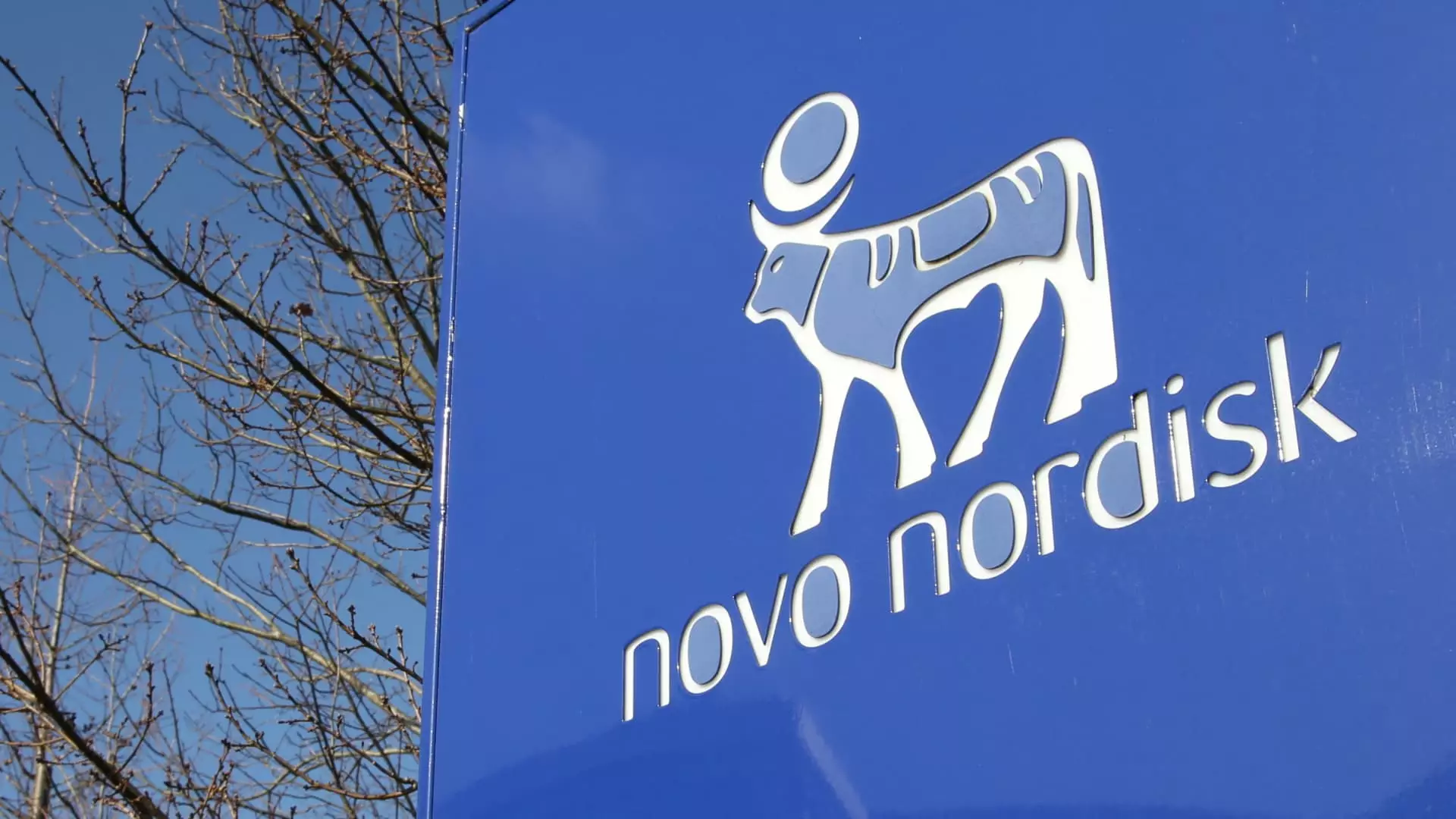Novo Nordisk’s recent struggle with its much-anticipated obesity drug, CagriSema, reveals unsettling truths about our current understanding of pharmaceutical innovation in the weight loss sector. Hailed as a potential game-changer, this drug combines two emerging treatment modalities—cagrilintide and semaglutide. Despite the early optimism surrounding CagriSema, its recent trial results have tarnished its reputation and highlighted significant gaps between marketing hype and clinical reality. As a center-wing liberal, I cannot help but critique the implications this situation has for both the pharmaceutical industry and public health, particularly in how these companies manage expectations in a world increasingly desperate for effective weight-loss solutions.
Reality vs. Expectations: The Fall of CagriSema
When Novo Nordisk released results from its REDEFINE-2 trial, the reaction was swift and unforgiving. The drug achieved a weight loss of 15.7% over 68 weeks, substantially below the high-teens percentages that executives had promised earlier. This discrepancy not only led to a drastic drop in share value—over 50% from its 2024 highs—but also belied a fundamental misalignment between patient expectations and actual outcomes. How did it come to this? The communication of targets by the company seemed to lack transparency, fueling unrealistic expectations among investors and patients alike.
CEO Lars Fruergaard Jørgensen’s optimistic comments ring hollow in light of this backlash. While he remains confident about CagriSema’s future, it’s critical to note that a share price plummet signals more than just investor disappointment; it points to a broader systemic issue within pharmaceutical marketing and trial reporting.
Failure to Deliver: A Lesson in Accountability
During the annual meeting, Jørgensen indicated that feedback from shareholders regarding clearer communication and well-structured trials was being taken seriously. However, “22.7% is not 25%,” he stated, emphasizing the disparity that left many feeling blindsided. It’s concerning that such a prominent company in the health sector apparently lacked sufficient contingency planning to address patient tolerability and trial flexibilities, which resulted in fewer than two-thirds of participants reaching the highest dosage by the end of the trial.
This scenario begs the question: how much accountability should pharmaceutical giants bear for advertising drugs that fall short of expectations? In an era when public trust in healthcare is vital, companies must own their failings instead of attempting to dodge accountability. The disconnect between trial results and expectations is not merely a corporate failure but a public health issue that affects millions seeking effective weight loss solutions.
A Market Divided: The Complex Landscape of Obesity Treatment
The weight-loss industry is becoming increasingly polarized as various methodologies vie for popularity. While experts like Soren Lontoft insist on the necessity of diverse treatment options to cater to varying patient needs, it’s also evident that CagriSema’s lackluster performance affects broader market sentiment. Investors and patients alike appear to be searching for the “holy grail” of obesity treatment—a miracle drug that can provide substantial weight loss without severe side effects.
This unrealistic quest for a one-size-fits-all solution underscores a crucial gap in public understanding. With ongoing debates in the medical community about the nature and scope of obesity treatment, missteps like CagriSema only add fuel to the fire. The hope is that the continued development of diverse weight-loss drugs will result in better outcomes for patients with different needs and tolerability levels; however, the industry must acknowledge the complexities involved in creating effective solutions.
Novo Nordisk’s challenges with CagriSema reveal not only the pitfalls of optimism in the pharmaceutical industry but also how urgent it is to foster genuine communication. Transparency should not merely be a buzzword but a guiding principle. As we tread deeper into an era of innovative medical solutions, the ramifications of these trial missteps must lead to a culture where accountability, patient-first thinking, and genuine engagement take precedence. Healthcare has never been just about the drugs we take; it’s about the narratives we create around them. The time has come to reshape that narrative to better align with the needs of real-world patients.


Leave a Reply